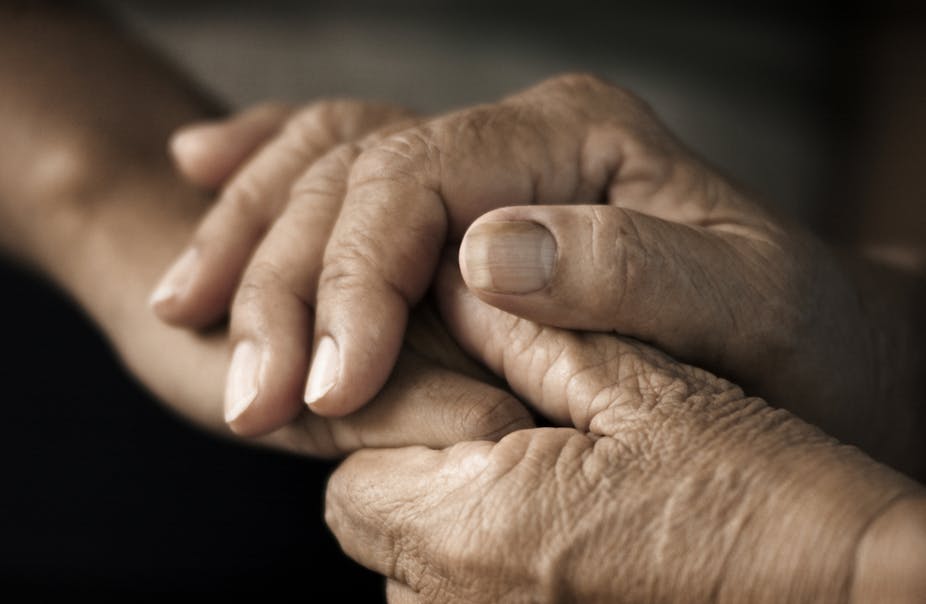Medical science continues to push at the boundaries of life and death with new drugs and technologies that can extend life or improve health. But these advances come at a cost. And that inevitably raises difficult questions about whether public health systems should pay for such treatments – and, if so, how much. For example, should the NHS fund the new breast cancer drug Kadycla which comes with a £90,000 price tag per patient?
Some countries make these difficult decisions by looking at the cost-effectiveness of new treatments. How much does the new treatment cost and how effective is it compared with existing treatments? Treatments may help patients live longer, or they may improve a patient’s quality of life (or both). Kadycla appears to extend life by about six months.
One mathematical way of combining these elements uses the concept of a Quality-Adjusted Life Year saved, or QALY. As an example, a treatment that extends life for one year but at a “quality” level of half normal it said to save 0.5 QALY. When treatments are assessed this way, health systems can then use a threshold to work out a maximum cost that is affordable. The National Institute for Health and Care Excellence (NICE) uses a threshold of £20,000-£30,000 for each Quality-Adjusted Life Year saved (QALY). This would mean (assuming full quality of life), that the NHS would be prepared to pay £10,000-15,000 for a course of Kadycla.

As the example of this drug illustrates, medical treatments towards the end of life can be very expensive and may not extend or improve life very much. Public health systems often spend a great deal in the final phase of life. In the United States, for example, up to 30% of the annual US$500 billion or so in Medicare costs are spent on patients in the last year of life. The National Health Service in the UK spends about £1.3 billion annually on inpatient hospital costs for the same group of patients.
Who to prioritise
Standard cost-effectiveness thresholds like that used by NICE give equal weight to treatments that extend life or improve life no matter where they occur in a life or how badly off the person is. But perhaps the health service should give priority to patients who have only a very short time to live? Medical professionals understandably find it difficult not to provide possibly life-saving treatments to gravely ill patients – and wider society often expresses sympathy and support for patients who have received the terrible news that they have a terminal illness.
In 2009, NICE published advice that it would consider using a higher threshold for these patients. This means that more expensive end-of-life treatments, perhaps costing as much as £80,000 per QALY have been funded.
But is it the right thing to do to allocate more money for those at the end of life? One concern is that in a healthcare system with a fixed budget, this inevitably means that some other (more effective or less costly) treatments will not be funded. Economists Marissa Collins and Nicholas Latimer calculated that the increased threshold for these treatments means that between 6,000 and 15,000 QALYs worth of treatment per year to other people in the UK will not be funded.
Recent research also suggests that this extra funding for highly expensive life-extending treatments at the end of life may not actually be what patients or others in society want. For example, a UK study involving nearly 4,000 members of the general public found that those surveyed didn’t give any extra priority to treatment at the end of life. When making choices between treatments, people were focused on how effective the treatment was, not when in a life the treatment was effective.
The price of life
A recent study from Singapore also provides particularly valuable insights. The authors conducted a study with a number of healthy older adults living in the community as well as with a group of patients with advanced cancer. The study focused specifically on the costs of different treatment. (In Singapore, people usually pay for medical treatment from their savings, or from a health savings plan).
The people in the study were asked how much money they were prepared to spend on different treatment options if they had cancer and a short time to live. It is not a surprise to find that, compared with the healthy group, people who had advanced cancer were prepared to spend more money on medical treatment – the possible outcomes must have seemed much more real and pressing. But what might be surprising was the finding that both groups were much more focused on quality of life and palliative care than on extending life. For example, the patients were prepared to pay an average of S$20,000 extra (about £10,000) on treatment that would mean they could be at home to die (rather than dying in hospital) and S$43,000 on treatment that would mean they were not in pain.
In comparison, they were prepared to pay only S$11,000 (about £5,000) to be able to survive for an extra 12 months. Other studies have also suggested that for end-of-life treatments, people place more importance on quality than on pure length of life.
How does this help us? Policy makers face enormous challenges in deciding between treatments. It is extremely difficult to know how to weigh up treatment for breast cancer or prostate cancer, against providing fertility treatment or childhood vaccines. But when it comes to treatments at the end of life, it may be a mistake to spend our energies, and limited resources, on highly expensive life-extending technologies and drugs. What many patients value more is high quality palliative care, the chance to be with their family, to avoid burdensome treatments and to remain in their home.
In conjunction with Oxford University’s Practical Ethics blog

